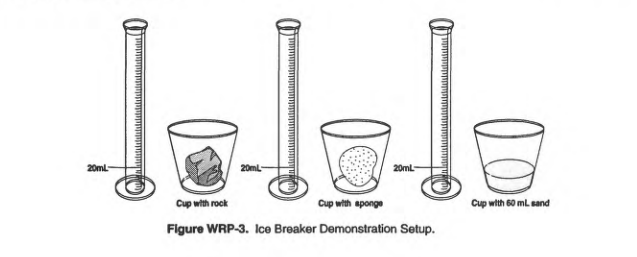Groundwater notebook WRP-3

Detailed Description
Begin a demonstration by placing the rock, piece of sponge, and the 60 mL (2.0 oz) of dry sand in three separate 266-mL (9-oz) clear plastic cups. Put 20 mL (0.7 oz) of water in each of the three 100-mL (3.4-oz) graduated cylinders.
Ask the students what will happen if you pour the contents of the graduated cylinders (20 mL) into each of the cups. Beginning with the cup that contains the rock, pour equal amounts of water (20 mL) into each of the three cups. Then pour the free-standing water back into the graduated cylinders and record on the chalkboard the amount of returned water for each cup. How much water remains in each cup? Does each material hold equal quantities of water? (Answer: No.) Why? (Answer: Because each material holds a different volume of water in its pore spaces.) Which material holds the most water?
Excerpt taken from Open-File Report 94-73.
Sources/Usage
Public Domain.

